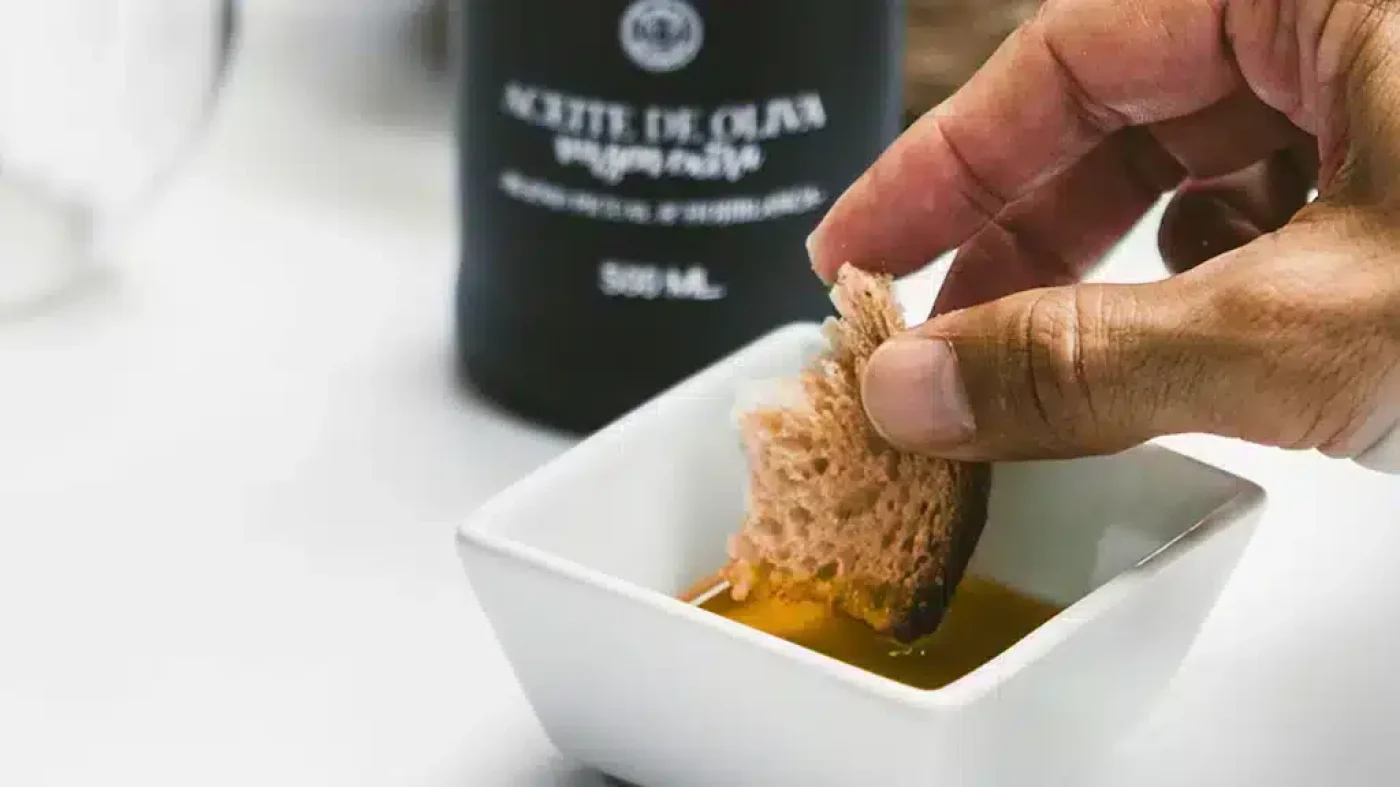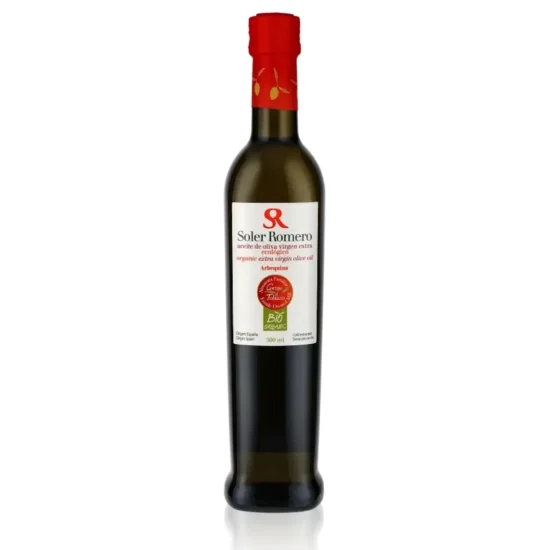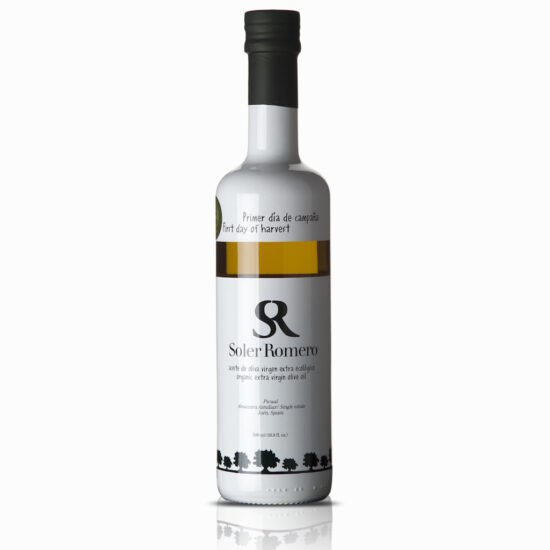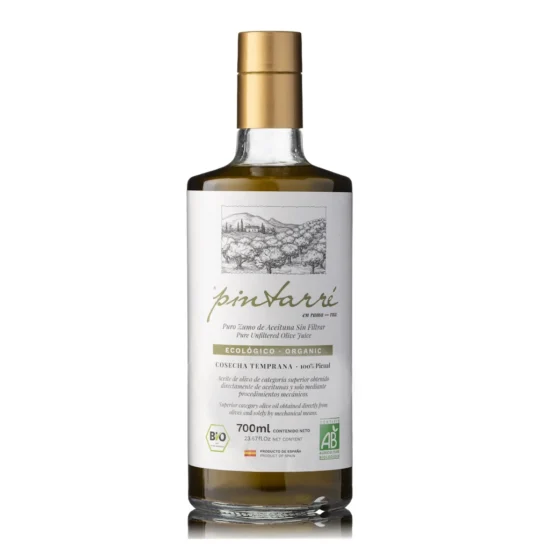
Extra virgin olive oil (EVOO) is a fundamental pillar of gastronomy and nutrition in Mediterranean cultures and, increasingly, globally. The complexity of its chemical composition and its organoleptic attributes are key factors in its appreciation. However, beyond sensory characteristics, there are physicochemical parameters that can provide an indication of its quality and authenticity. Among these, the density of olive oil emerges as a relevant, though often misinterpreted, indicator that impacts its physical behavior and, indirectly, its perception of quality.
Density is defined as the mass per unit volume of a substance, and in the case of olive oil, its density is intrinsically linked to its fatty acid composition, the presence of other lipid and non-lipid compounds, and temperature. At 20°C, the density of EVOO typically ranges between 0.913 and 0.916 g/mL.
The majority of olive oil’s mass is composed of triglycerides, which are esters of glycerol and three fatty acids. The proportion of saturated, monounsaturated, and polyunsaturated fatty acids influences density. For example, a higher content of saturated fatty acids (such as palmitic and stearic) tends to slightly increase density, while unsaturated fatty acids (such as oleic, linoleic, and linolenic) can decrease it. However, variations in triglyceride composition within the typical ranges of an EVOO are subtle in their impact on overall density.
Another crucial factor is temperature. The density of liquids decreases with increasing temperature due to the volumetric expansion of molecules. This relationship is inversely proportional and must be considered when performing density measurements, as a difference of a few degrees can alter the recorded value. Therefore, density measurements in laboratories are performed at a standardized temperature (generally 20°C).
It is a common empirical observation that bubbles in a “higher quality” EVOO rise more slowly than in a “lower quality” one after agitation. This observation, although visually striking, requires a technical explanation that goes beyond a simple direct correlation with density in the strict sense.
While the density of extra virgin olive oil is relatively constant within a narrow range for authentic, high-quality products, viscosity plays a more predominant role in bubble behavior. Viscosity is the measure of a fluid’s resistance to flow. A more viscous oil offers greater resistance to the movement of bubbles through it, resulting in slower ascent.
The viscosity of EVOO is influenced by:
Therefore, when the bubbles of a “better-quality” oil are observed to rise more slowly, this is not so much a manifestation of significantly higher density, but rather of higher viscosity. This higher viscosity, in turn, may be associated with a higher quality profile that includes a higher concentration of beneficial compounds and less alteration of the oil’s molecular structure. A lower-quality or adulterated oil may have a lower viscosity due to refining processes or the addition of other lower-viscosity oils.
An oil with a higher viscosity (and therefore a perception of greater “density” or “body” in the mouth) is often associated with a richer sensory experience. This dense, “silky” texture on the palate is a desired characteristic in high-end EVOOs, contributing to the sensation of “body” or “weight” in the mouth. This sensory characteristic may be correlated, as shownHe mentioned that the oil has a higher concentration of bioactive compounds such as polyphenols, which not only contribute notes of bitterness and spiciness (positive attributes in an EVOO), but are also potent antioxidants.
Polyphenols, being heavier compounds with greater intermolecular interaction, can indirectly contribute to the oil’s viscosity. Therefore, an EVOO with a robust polyphenolic content, which is associated with a careful extraction process and high-quality olives, could show a slightly higher viscosity and, consequently, slower bubble rise. This doesn’t mean that an oil with rapid bubbles is necessarily bad, but it does mean that the behavior of the bubbles can be a quick visual indication of the oil’s integrity and its richness in minor components.
Although visual observation of bubble behavior in olive oil offers a practical and accessible indication of its potential quality, it is crucial to understand that this is primarily due to the oil’s viscosity, rather than a substantial difference in its density in absolute values. Higher viscosity, in turn, can be indicative of a higher quality profile, with a higher concentration of bioactive compounds and a less altered molecular structure.
For the consumer, this observation can serve as an intuitive initial guide. However, for an accurate assessment of EVOO quality and authenticity, physicochemical laboratory analyses (such as acidity, peroxide value, UV absorption, and fatty acid profile) along with expert organoleptic tasting are essential. Density and viscosity, while not the only quality parameters, are integrated into the complex matrix of characteristics that define an exceptional extra virgin olive oil, offering valuable insight into its integrity and composition.
Important Note: aceitedelcampo.com promotes the consumption of extra virgin olive oil for its culinary qualities and health benefits. However, no medication or current treatment should be replaced without the guidance of a healthcare professional.




ALZAYT EXPORT SL
info@aceitedelcampo.com
C/ Eduardo Bosca 19, 2-5
46023 Valencia
Subscribe and receive a coupon by email for your next purchase.